Hello, I am a designer from China. I studied industrial design at Shanghai Jiaotong University as an undergraduate due to the simple idea of doing something different. But after graduating, I came here to try to understand what it means to be a designer as I questioned the excessive commercialization of design. I am a designer with no name. But hey! Who doesn’t start at this stage? I hope my “about” section will be enriched in the future!
Xinyi Chu


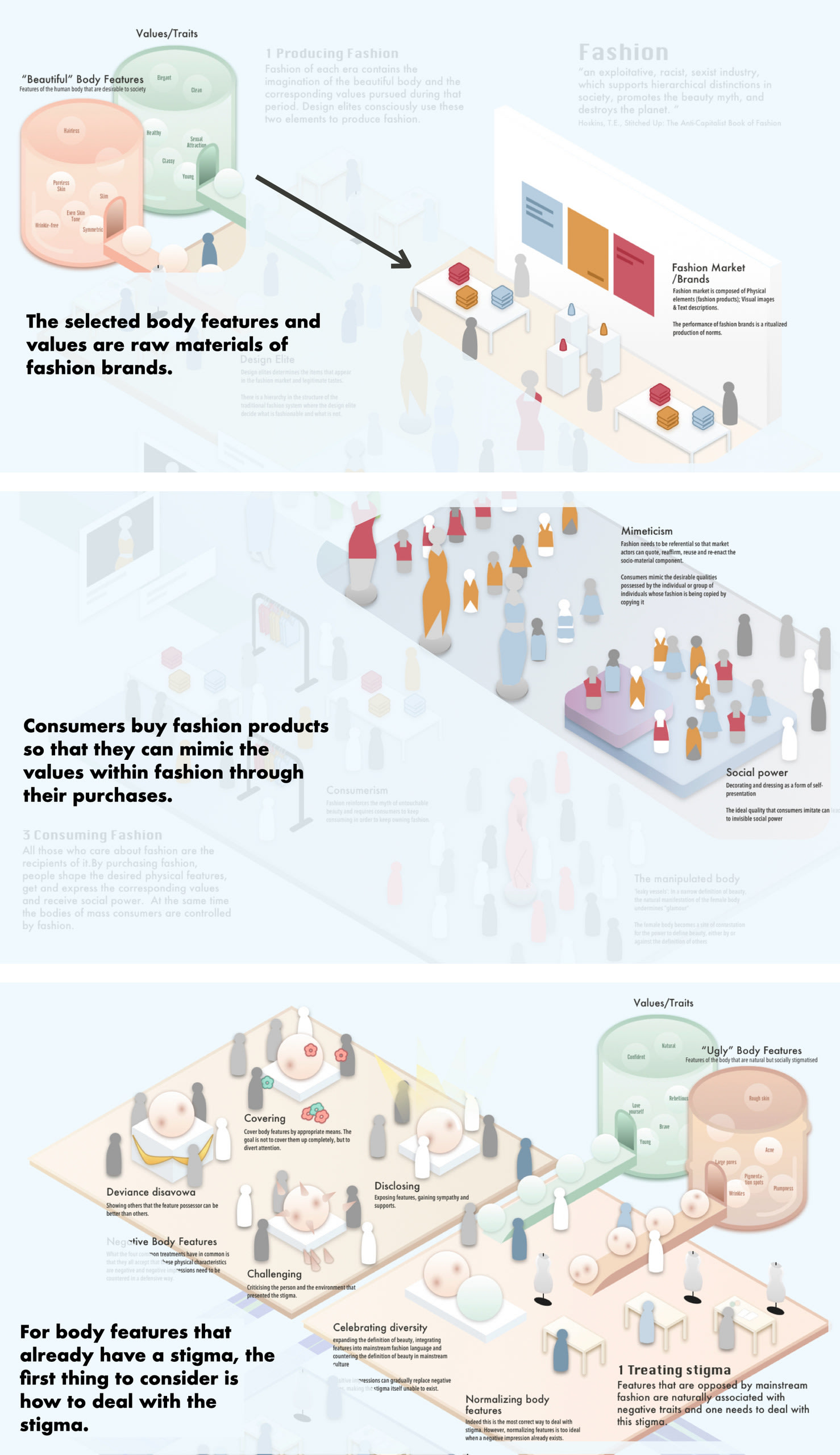

My project came from my daily observations of myself and my friends: I found that people are not comfortable seeing their real skin. People try every way, both physical (make-up) and electronic (filters), to cover up their skins. People were taught to look at every pore and bump on their face in a magnifying lighted make-up mirror, to identify the causes and stages of all the flaws, and to spend a lot of time and money learning how to conceal or remove them.
This is because mainstream aesthetics tell people that real skin is ugly and that people with imperfect skin possess traits that are socially unappealing (such as being old, sexually unattractive, or unclean). Such stigma, appearance anxiety, and accompanying consumerism come together to form an invisible corset as a freak fashion.
In order to understand how I should respond to the current situation, I need to first understand what fashion is and what motivates people to pursue it. Then I could figure out my own approach.




What would happen if features on the skin could be worn as freely as jewellery, and people might choose the number and colour of pimples on their face today because of their mood? I want to challenge the deeply ingrained notion that skin imperfections can only be artificially minimised. To take skin features out of the invisible corset and make them body features that can be treated with ease.
Working with two wonderful artists, we experimented with various ways of using pimples as decoration and creating facial accessories. The anthropomorphic pimples can adorn the cheeks like blooming flowers.
In Collaboration with:
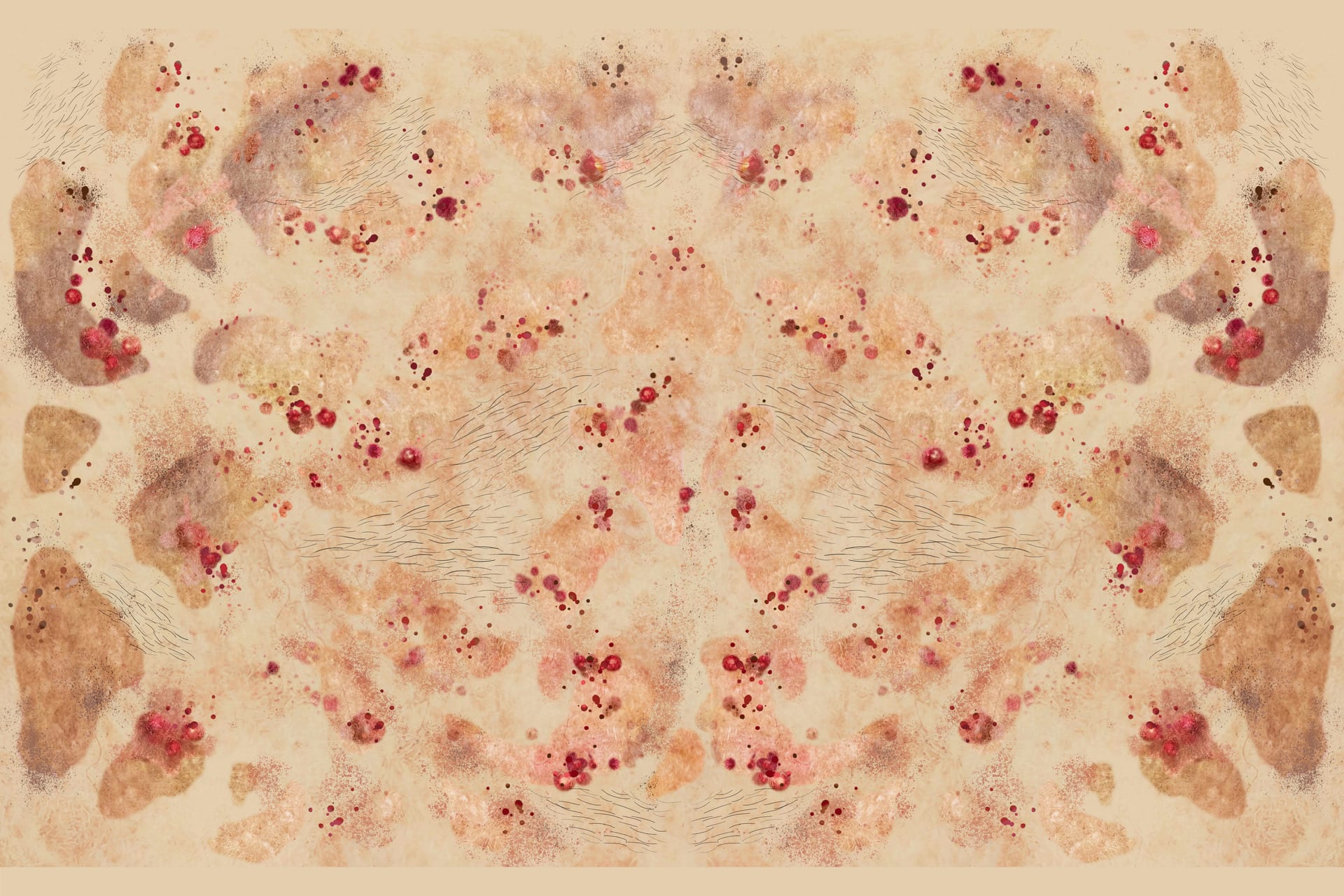



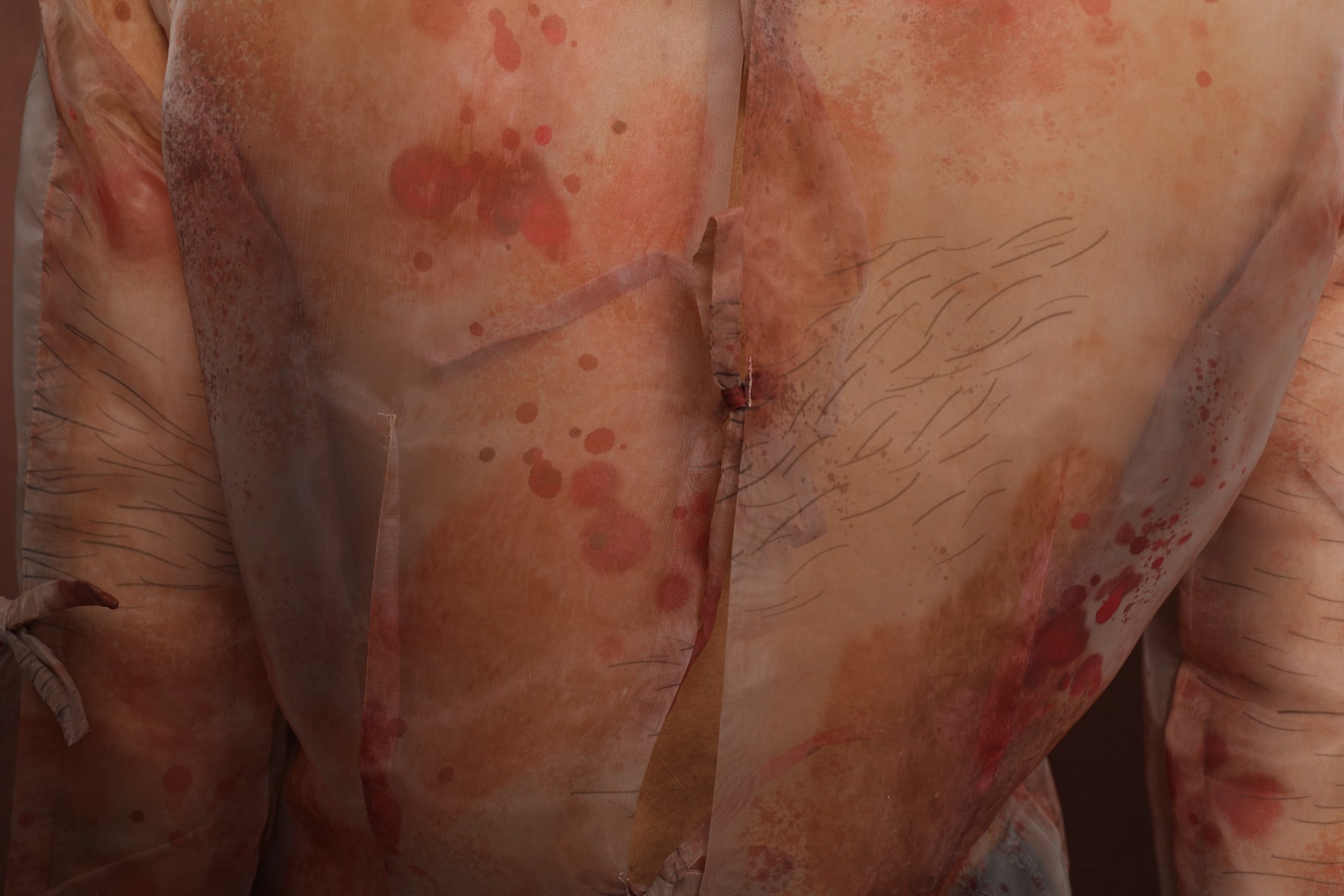




In order to spread my designs and to help people accept a wider range of images of real skin, I created two different patterns using a combination of my own skin photos, wool felt material created by Yaning, and web images. I wanted people to view their own skin as a beautiful and special pattern. The sheer printed fabric allows the pattern to blend perfectly with the real skin. A tailor helped me make the fabric into tops. I asked two ordinary people to model the tops, leaving their skin as untouched as possible and showing how confident they looked.
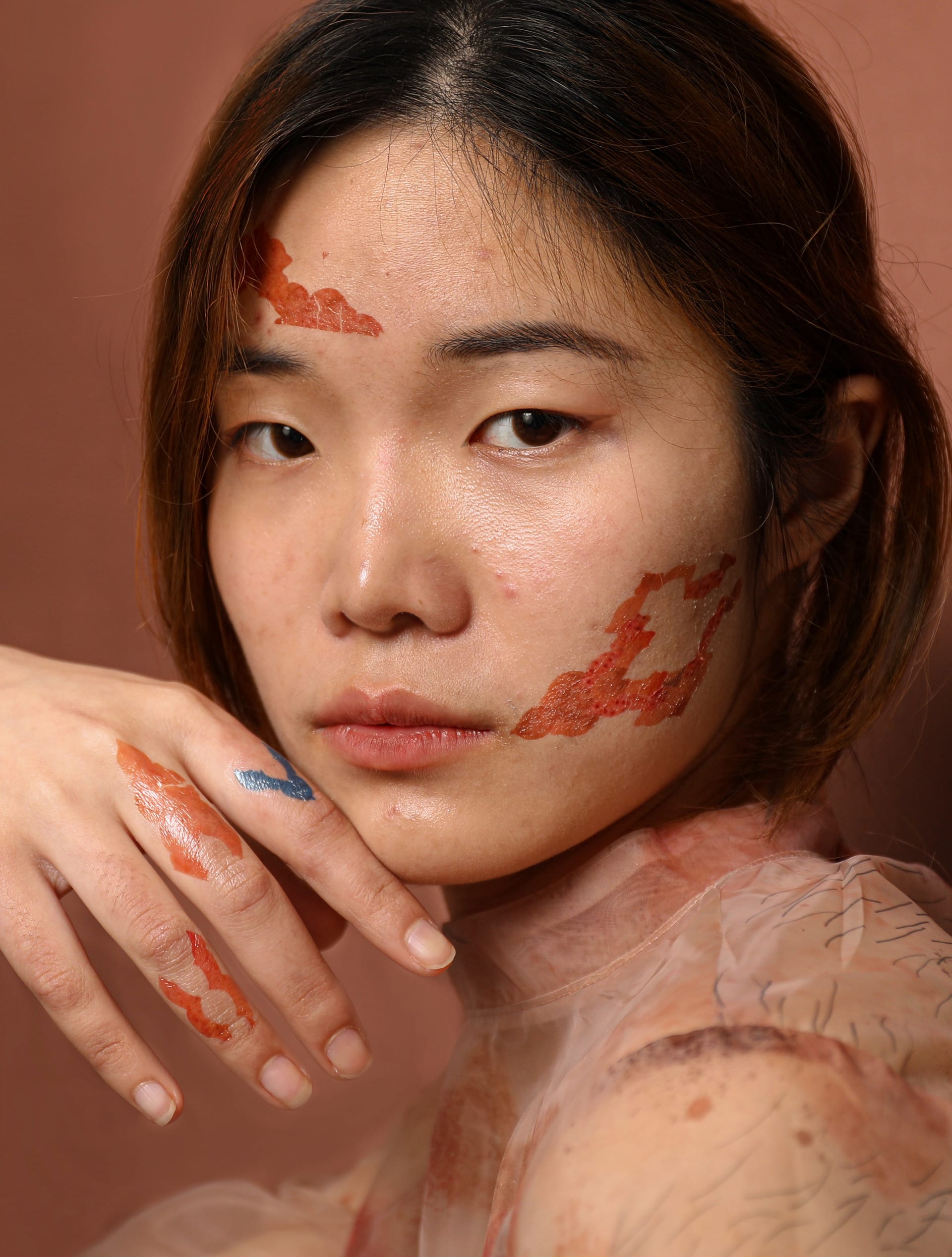



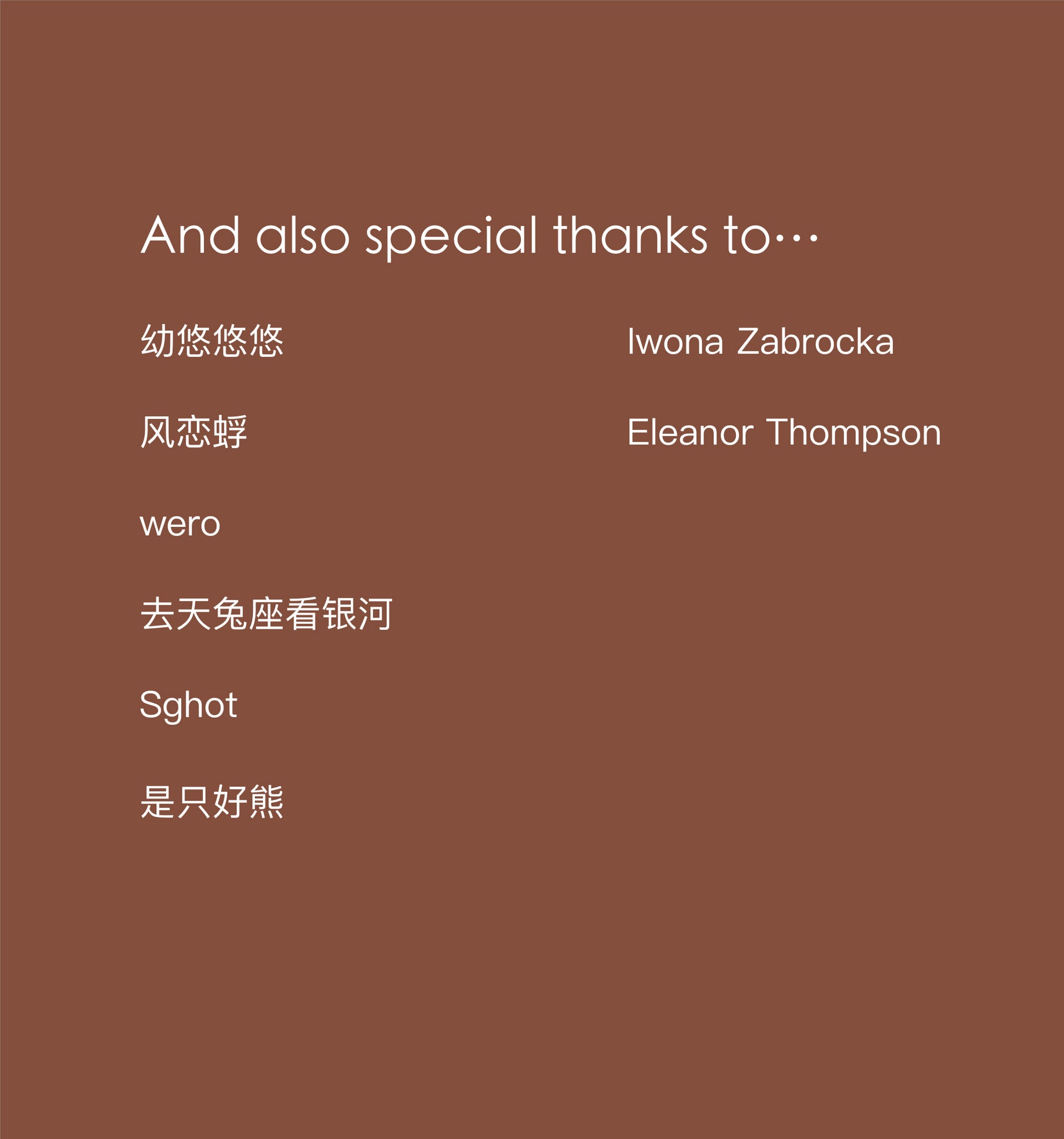
In my previous work I tried to convince people that their skin could be seen as a special kind of pattern, but how do you get people to actually practice this idea? I came up with the idea of tattoo stickers. I used the shapes in the pattern to create tattoo stickers with skin prints and holes in the middle to put into skins.
Show Location: Battersea campus: Studio Building, Third floor
Contact

As a designer, I rarely rely on inspiration for my designs. My designs are focused on contextual research and will make concessions for the sake of being ultimately usable. I also realize that this tendency to design has often made my designs boring, and I am trying to push my limits on myself after studying here.
I have always been interested in social science and I also see design as a variable that acts on human society. In my past attempts, I have tried to combine my identity and experience as a female in my designs, and I hope that my designs will find their place between the statement in the art gallery and the everyday tools. In my past practice, I have recognized the great role that design can play, but I am also aware of the limitations that design can have. My future attempts will continue to find my own path between statements and tools, the values and limitations of design.